Leaving Nikon for Fujifilm
A BRIEF PREFACE:
I’ve been photographing weddings all over the world since 1999. Prior to that, I was shooting for the Seattle weekly papers and doing portraits. In high school, I was the yearbook photographer and developed my own film for my high school newspaper and wrote record reviews. It was only interesting to me, so I’ll skip the details. This is an article about equipment, but I take the same photographs, regardless of the camera. Hasselblad, Leica, iPhone, Holga. I will think about composition differently in it’s a square format or a panoramic format, but I’m always me. The photographer makes the photograph. Photographers should let go of fetishizing the tools used and redirect that energy into the final image. When digital started taking over around 2003, I used to be obsessed with shooting film and considered digital to be an affront to that. What I realized in time is that shooting film gave me a solid foundation in understanding exposure, printing and composition, as well as shooting efficiently. These are things that I take with me in my current life shooting digitally, but the medium from which the final image is created is WAY down on the list of importance. Focusing on equipment is yet another form of materialism and another form of collector mentality. I wish I could get back all the time in my life I wasted looking at pointless photos of wine bottles comparing bokeh and sharpness, reading reviews. Reading specification data is never going to be fulfilling. One will never have the perfect camera because no such camera exists. The perfect camera is in your mind. Master your craft and you’ll realize that there are really only two kinds of cameras: those make it easier to get to your desired image, and those that make it harder. In 20 years, all that will remain is the final image, especially if that image has been printed rather than sitting on hard drive in some proprietary format that no software can open anymore. Print your work! That said, here is part of the story on how I left Nikon for Fujifilm 3 1/2 years ago. (A much longer version is buried deep in my blog if you are curious).
A BRIEF BACKSTORY:
I bought my first Nikon, a black bodied FM2 in 1983. At the time, Nikon was bucking the trend of battery-dependent automation with a fully manual, fully mechanical camera that only needed a battery to power the +, 0 and – in the viewfinder. The shutter and self-timer worked mechanically, without battery. It made a very satisfying sound. I credit this camera (along with the Leica M3 that would come later) for teaching me to meter in my head, because when the battery would die I didn’t replace it! From this point, I started getting Nikon lenses, legendary for their quality and longevity. I tried many other systems from Canon to Hasselblad, but always kept coming back to Nikon. I owned the FM2, F3, F4, two F5s, an F100, D2xs, D200 and D300. The only system that caused me to stray was Leica. I ditched EVERYTHING for an M3, M6 and M7 and lenses.
When I worked at ProColor, a professional lab in Minneapolis in 1990, I loved grainy B&W film and I didn’t understand the appeal of clean, grainless images or Kodak Ektar 25. I was addicted to the images of Henri Cartier-Bresson and Ralph Gibson. I didn’t care for digital when it came out. The idea of instantly changeable ISO and images always in order was very exciting, but the results were awful. Poor dynamic range especially in the highlights, weird color noise above ISO400 and skin looked like plastic with hair on it. I had experience with Nikon and the Epson RD1 I bought to use with my Leica lenses was junk. Useless above ISO400. I bought the Nikon D2Xs and two D300 bodies. I shoot candidly and spontaneously, letting things unfold in front of me rather than creating them. My skill is recognizing these moments as they happen, not bringing a template of shots to every wedding. This requires that I know the gear instinctively and don’t have to think about how it works. A good interface makes the tool invisible and your job easier. A bad interface is counterintuitive and forces you out of the moment and slows your ability to react. When I get in a rhythm with something, I don’t want to have to relearn a new interface and undo all that time dedicated to muscle memory. As a result, I tend to hang on to things a while, out of sync with those who “upgrade” every year because features have been added or the sensor has gotten larger. My experience has been that familiarity with a camera usually is more likely to help you get the results than you are looking for than something that’s simply “faster.” I have been using my original X-Pro1 bodies and X100s now for 3 1/2 years, but more about that shortly…
The Nikon system, even with the APS-C sensor, was HEAVY. The D2Xs was a professional brick and I used the vertical battery grips for the 2 D300 bodies. Add the 17-55 f2.8, 50mm f1.4 and 85mm f1.4 lenses with the 3 bodies and a flash and you have 12-15 pounds on your shoulders (or in your camera bag). I had been using these bodies for years and was debating replacing the D300 bodies for a D700, which was a full frame body. I was very close to pulling the trigger, but part of me wanted out of the system and back into something lighter. The Leica M8 and 8.2 were beautifully made cameras, but their crop sensor had issues: it needed a magenta filter over the lens, their pre-digital lenses needed to be “chipped” to work with the body, and the quality at high ISO was less than stellar, to be kind. Nikon was slowly introducing more and more plastic into their cameras and lenses, and farming out lens manufacturing on some of the less expensive models to China and Thailand.
Around this time, I had been seeing Fujifilm’s bodies online and at the camera shop. I will openly admit that the X100 originally introduced noteworthy lust. I was aware of this and also aware that it transcended rationality. It was beautiful and clearly modeled after the 1957 Leica M3 body with it’s chrome top and black body leatherette. I eagerly tried it but the AF was r-e-a-l-l-y slow. It was so beautiful, the seed was planted. A few months later, I started reading about the X-Pro1 and it’s original 3 lenses. This clean black box with a viewfinder window for the OVF looked an awful lot like the M6/M7. I was INTERESTED. I saw it drop from $1699 for the body and $599 for the 35mm f1.4 to $1399 and $399, respectively, when purchased together. I placed an order and waited. The duo arrived on 12/12/12, and I took that as a good omen. I’m not a superstitious person, but I pretend to be when it makes the story better.
THE X-PRO1 ARRIVES:
Prior to blindly ordering it, I had never seen the X-Pro1 in the flesh: only in photos online. I eagerly unboxed the camera, mounted the lens and charged the battery. I didn’t read the manual until much later. The camera was much lighter than I expected. “If this works, I won’t need the heavy D700,” I thought. I loved the lack of slapping mirror and loved the nearly silent “snick” sound of the quiet shutter. Shooting around the house, the camera had a LOT of trouble locking focus, particularly when the light was low and the contrast was low (or both). The focus slow. The 35 f1.4 lens made a lot of scraping noises and you could hear the aperture blades chatter as they quickly opened and closed. Since the AF was so quirky, I thought I’d try manual focus as a potential workaround. The manual focus ring was a vague feeling “focus by wire” and spun forever without stops. Aperture priority mode chose shutter speeds far too slow in order to keep ISO low. Their was no focus peaking and manual focus was slow and challenging. The battery doesn’t last long, especially when the camera repeatedly struggles for focus. I loved the physical aperture ring, exposure compensation and shutter speed dials. I knew I had 30 days to try it out, but I was disappointed.
The next day, I tried it outside in the cold. Extreme cold. Minneapolis cold. Tongue freezes to metal cold. The all-metal body and lenses gets very cold to the touch, but it worked perfectly in 15 degree weather. For the next few weeks, it was my constant companion. I brought it everywhere and shot everything I could to see what it could do. I still had a couple months before my next wedding, so I wanted to see if I could make this work, rather than give up and get the Nikon D700 I was originally planning on. I was used to manually focusing the Leica film bodies, so I still held that as a backup plan. I checked out Fujifilm’s website and noticed there was a firmware 2.0 release, adding ISO6400 and promising to make both AF and manual focus faster. I downloaded and applied the firmware update.
Focus was noticeably quicker, and the manual focus no longer required so many turns to get it to respond. There was still no focus peaking (and I had no idea this was even coming) and the buffer seemed a little faster. I didn’t fully realize it at the time, but something was happening: I was getting used to the camera’s quirks while it was getting faster through firmware updates. I did some reading online and also bought Rico Pfirstinger’s “Mastering The Fujifilm X-Pro1,” which was much better than the manual and also helped me figure out how to best work with PDAF (phase-detection autofocus). When shooting horizontally, you need to look for vertical lines of contrast, and when shooting vertically, you look for horizontal lines of contrast. That was a huge revelation, along with getting faster at moving the AF points around, and this camera was starting to feel like an old friend.
Suddenly, I was getting images that I loved. None of my specific complaints mattered at that point. Pros and cons are just lists on reviews.
Unlike the D300 bodies, I had no problem shooting the X-Pro1 at ISO6400, which was similar to the film scans at ISO 800 or D300 quality at about ISO800-1000, and Fujifilm’s proprietary color pattern over the anti-aliasing-free sensor was not only sharper but looked more like film to my eye, especially once I was done treating the RAW files in Lightroom. I was falling in love.
DISCARDS FROM THE DISILLUSIONED AND THE DISAPPOINTED:
I don’t do anything halfway. Once I bonded with the X-Pro1, I was ready to switch. I believe in having consistency because you don’t miss shots thinking about the controls. I started looking for used bodies and used lenses. I had no trouble finding bargain priced, “like new” used copies because they were so new and the used market was already flooded with Fujifilm X-Pro1 bodies and lenses, discards from the disillusioned and the disappointed. I found two more X-Pro1 bodies and the 18mm and 60mm lenses and put ALL of my Nikon gear on Ebay. It more than paid for the Fujifilm system and left money for an ONA camera bag. I still had a few weeks to practice before my next wedding, which I decided was going to be an all-Fuji wedding. In a strange twist of bad timing, Nikon had just mailed me my NPS membership renewal card and USB drive which is now lost in a drawer somewhere.
As time went on and using the system become second nature to me, it was clear that Fujifilm was listening to their users. They were updating the firmware, adding features and making the camera faster and more responsive, as well as quickly expanding their lens line. Each lens seemed sharper, quieter, faster and better built than the original trio. The 14mm lens introduced a push/pull focus ring for instant manual focus and the focusing ring had a hard stop. They later introduced this into the 16mm and 23mm lenses, but I wished they would ALL work like that. Fast forward to months later and I had begun replacing the original 3 lenses with the 14mm f2.8, 23mm f1.4, and 56 f1.2, later getting the 90mm and 35mm f2.
In early 2014, I replaced my third X-Pro1 body with a used X100S, which has become my day to day, take everywhere camera. 99% of all photographs in my landscape portfolio were taken with the X100S. AF is slightly faster in low light than any of the lenses on the X-Pro1, so I sometimes lean on it during wedding receptions, too. My main lenses for weddings are the 23, 35 and 56. I could do an entire wedding with the 35. I almost never use the 14mm and 90mm, but they are nice to have it the situation presents itself.
Fujifilm has continued expanding their lens line and updating their products with new features via firmware. They do eventually abandon them (my X-Pro1 bodies are at 3.60, released about 9 months ago), but they are really the only company so aggressively improving their products and sharing most of those benefits with previously purchased cameras. This is rare, and this is good.
Short story: The Fujifilm system is lighter, beautifully designed, solidly constructed, works wonderfully at ISO6400 (and 12800 on the X-Pro2) and the all-metal lenses are world class. The dynamic range in the files is nothing short of astounding. I’ve rescued accidentally overexposed RAW files by 3 stops and they are indistinguishable from any other image. All of this also comes from a much less expensive system than anything you can get from Canon or Nikon. Another asset that doesn’t get enough airplay: for weddings, quiet mirrorless cameras are wonderful, particularly during ceremonies where the last thing you want to do is be noticed or distract the couple.
My style of working is to observe rather than direct. I see compositions as they are happening, and sometimes just before they happen because I am focused on the light. Since my goal is to blend in, a quiet, unobtrusive camera is a wonderful asset, and for that reason, the original X-Series gear works perfectly for me.
LESS IS MORE: MY CURRENT FUJIFILM GEAR:
2 X-Pro1 bodies, both with 125,000+ frames on the shutter
1 X100s with 45,000 on the shutter
14mm f2.8
23mm f1.4
35mm f2
56mm f1.2
90mm f2

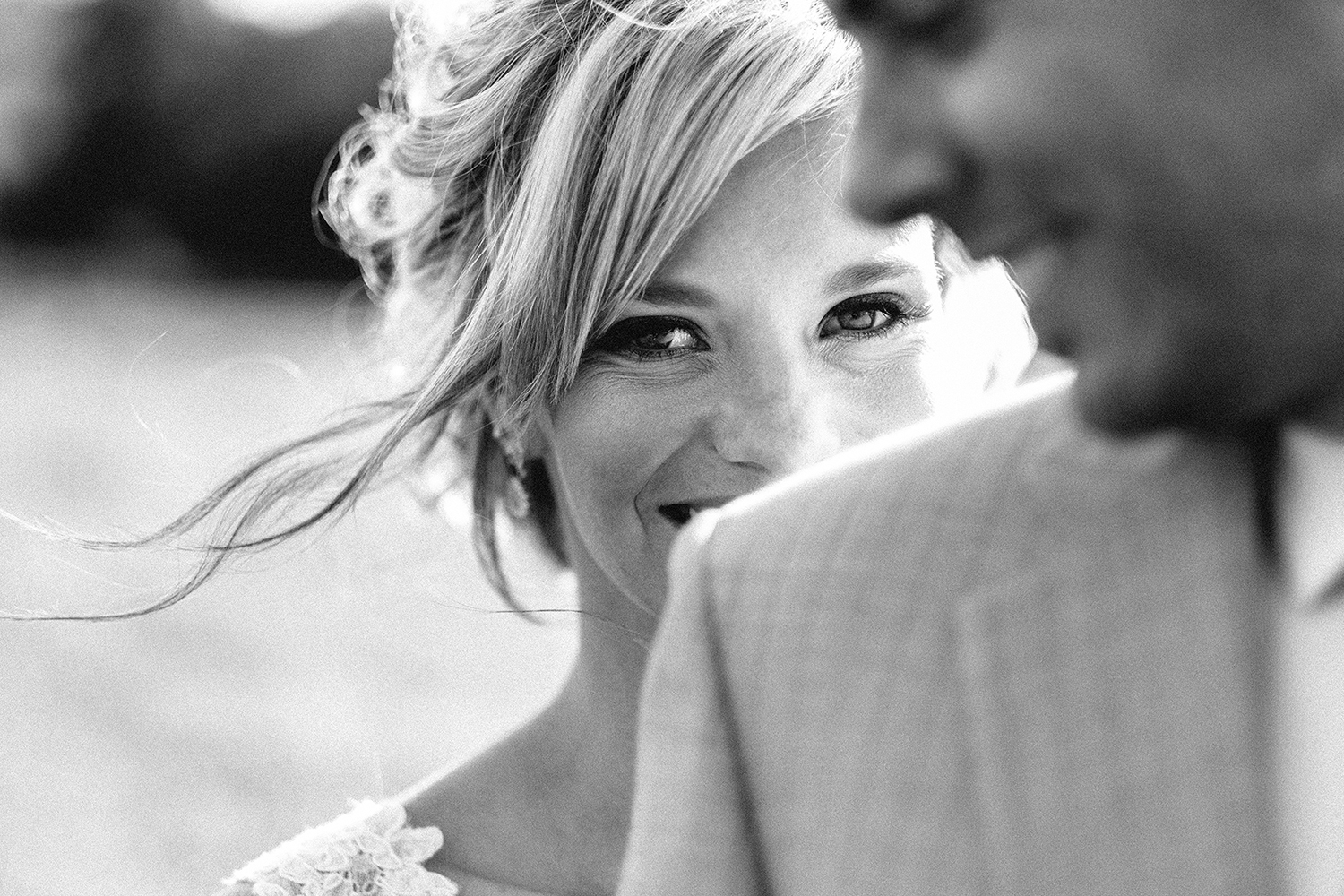

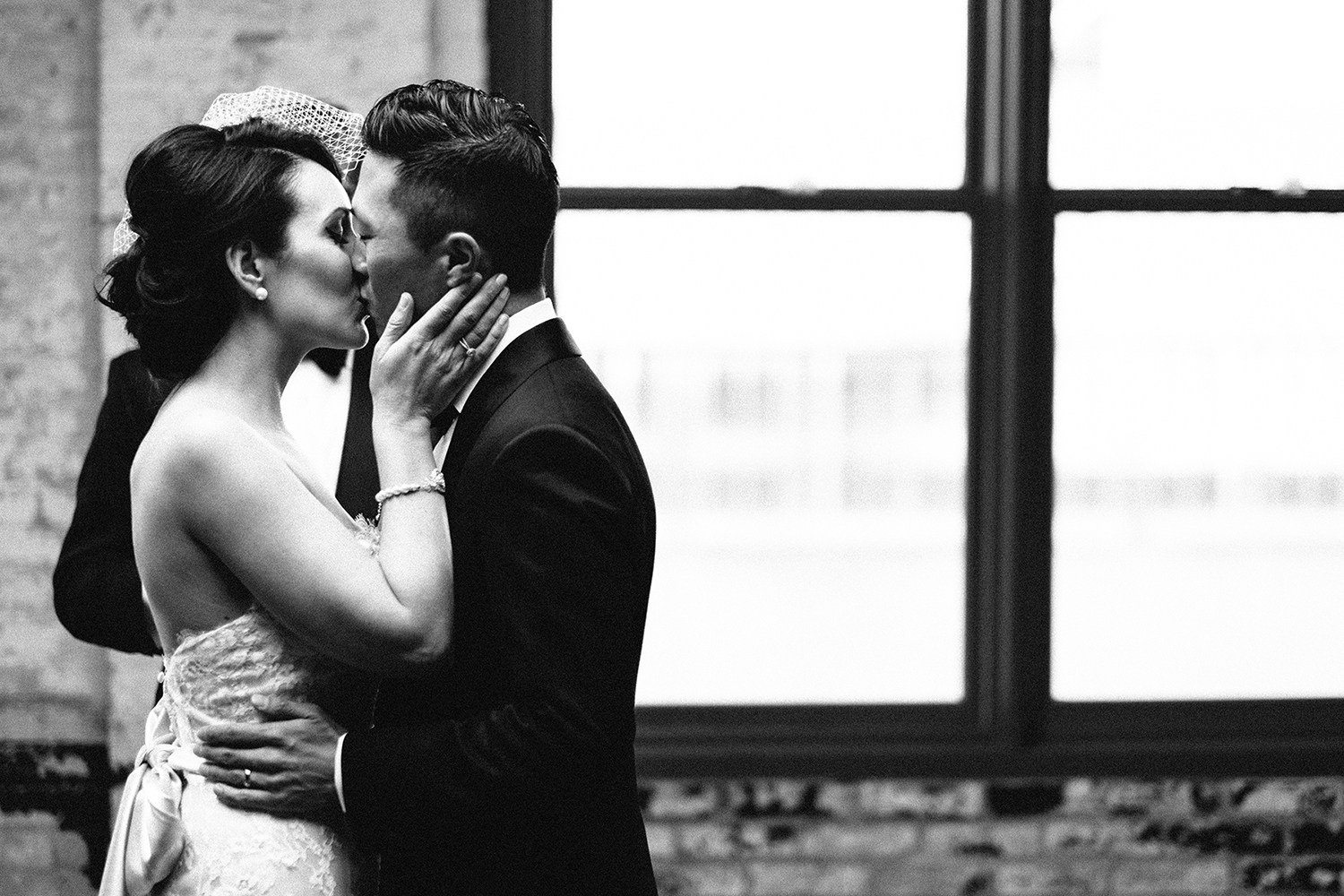

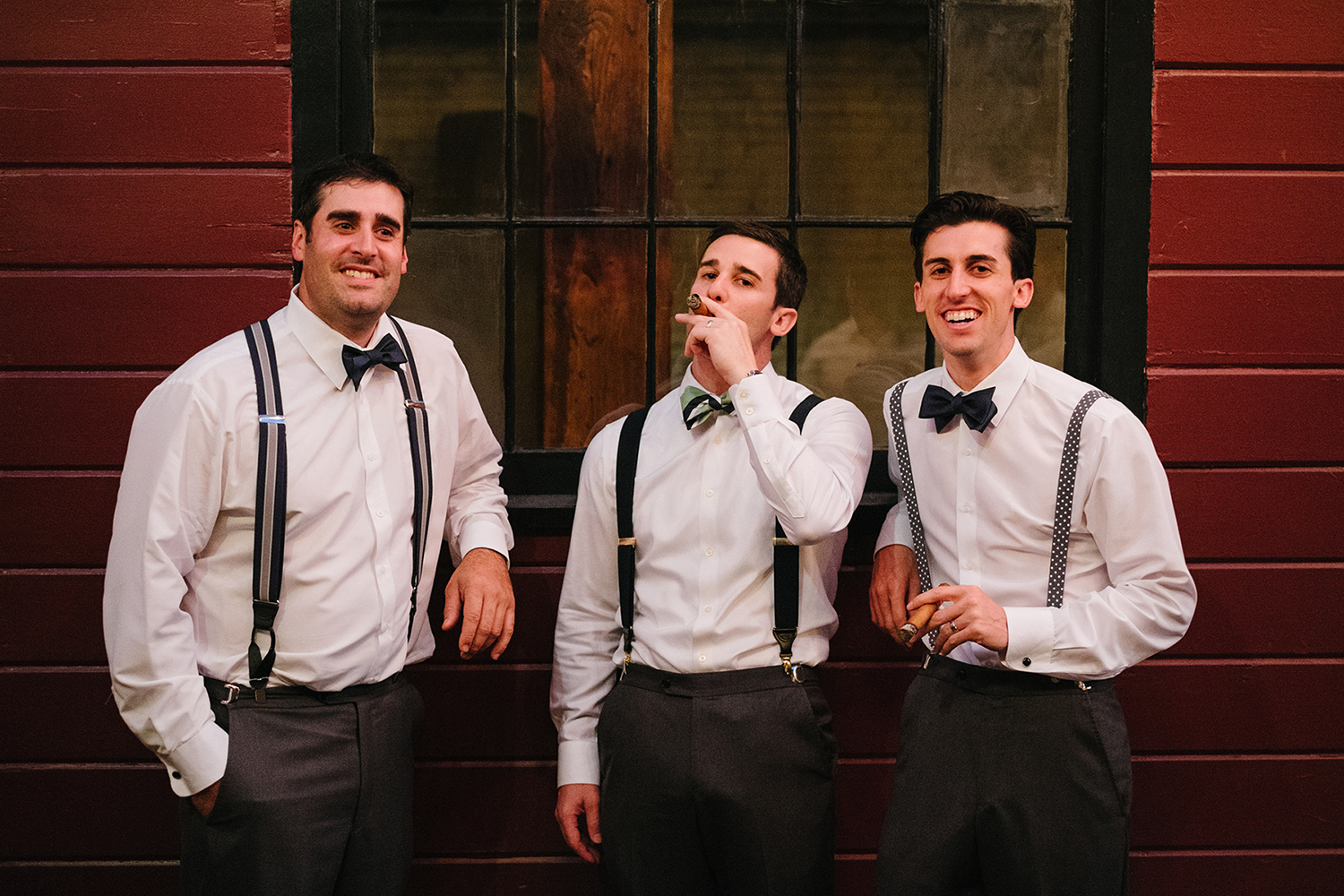

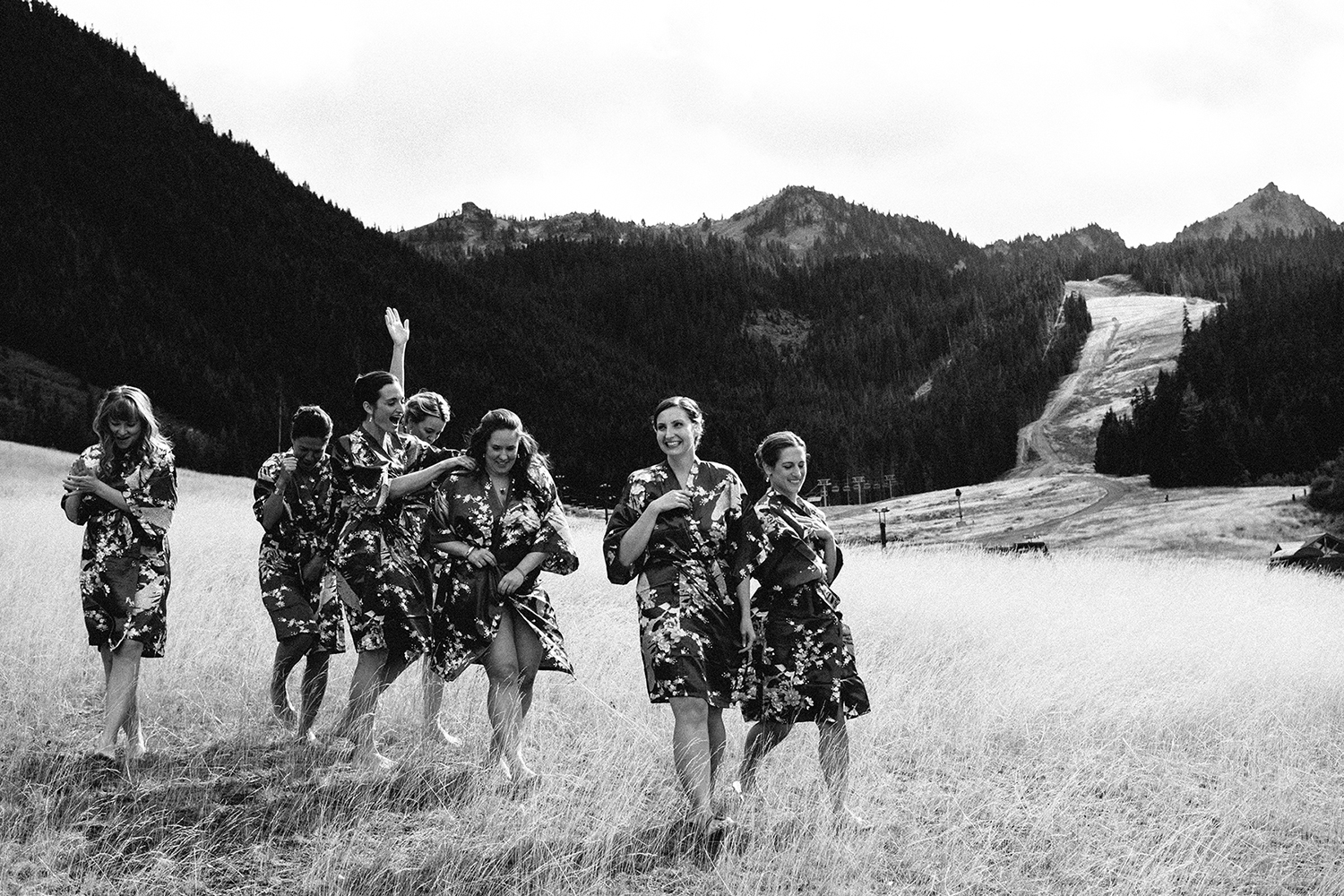
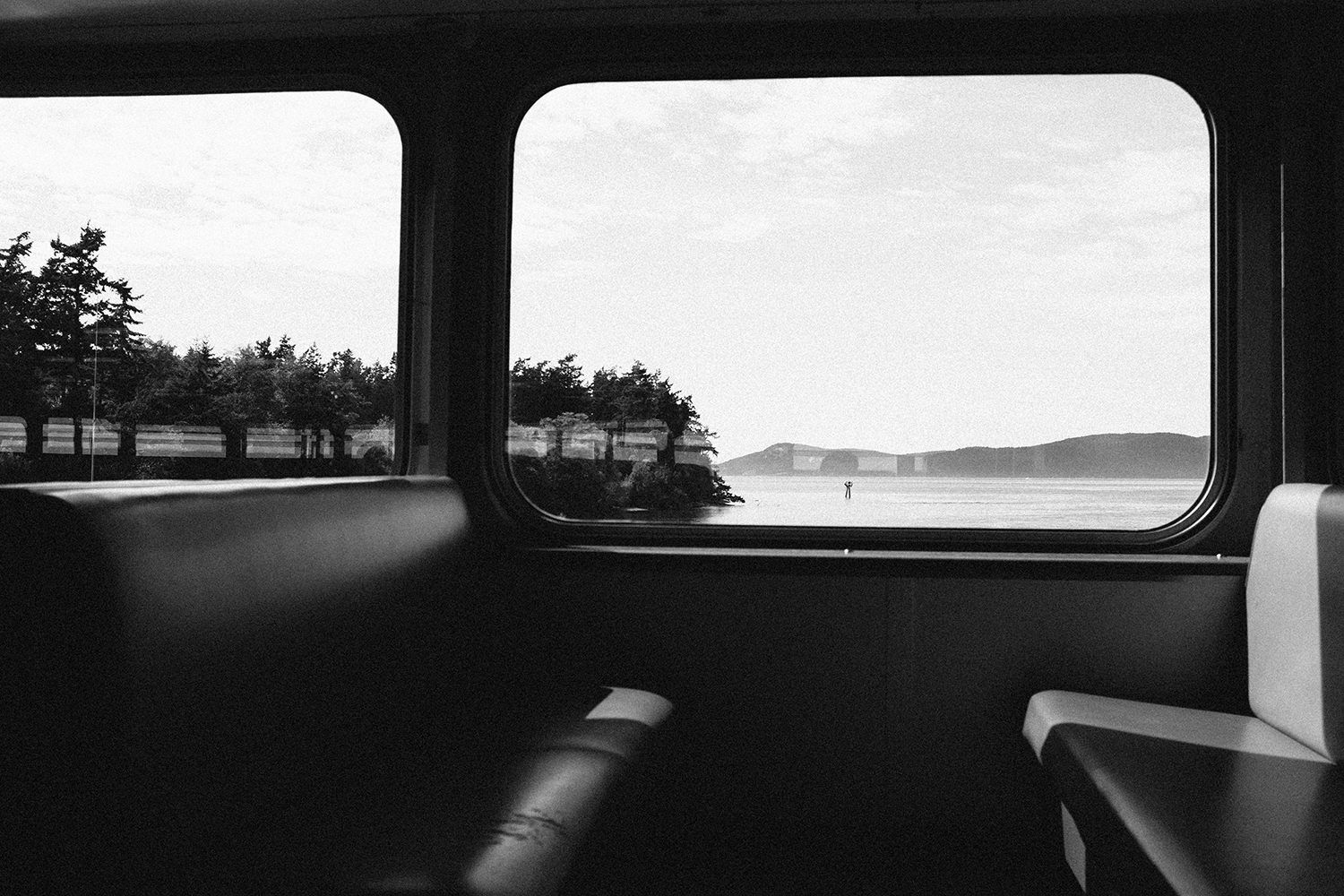

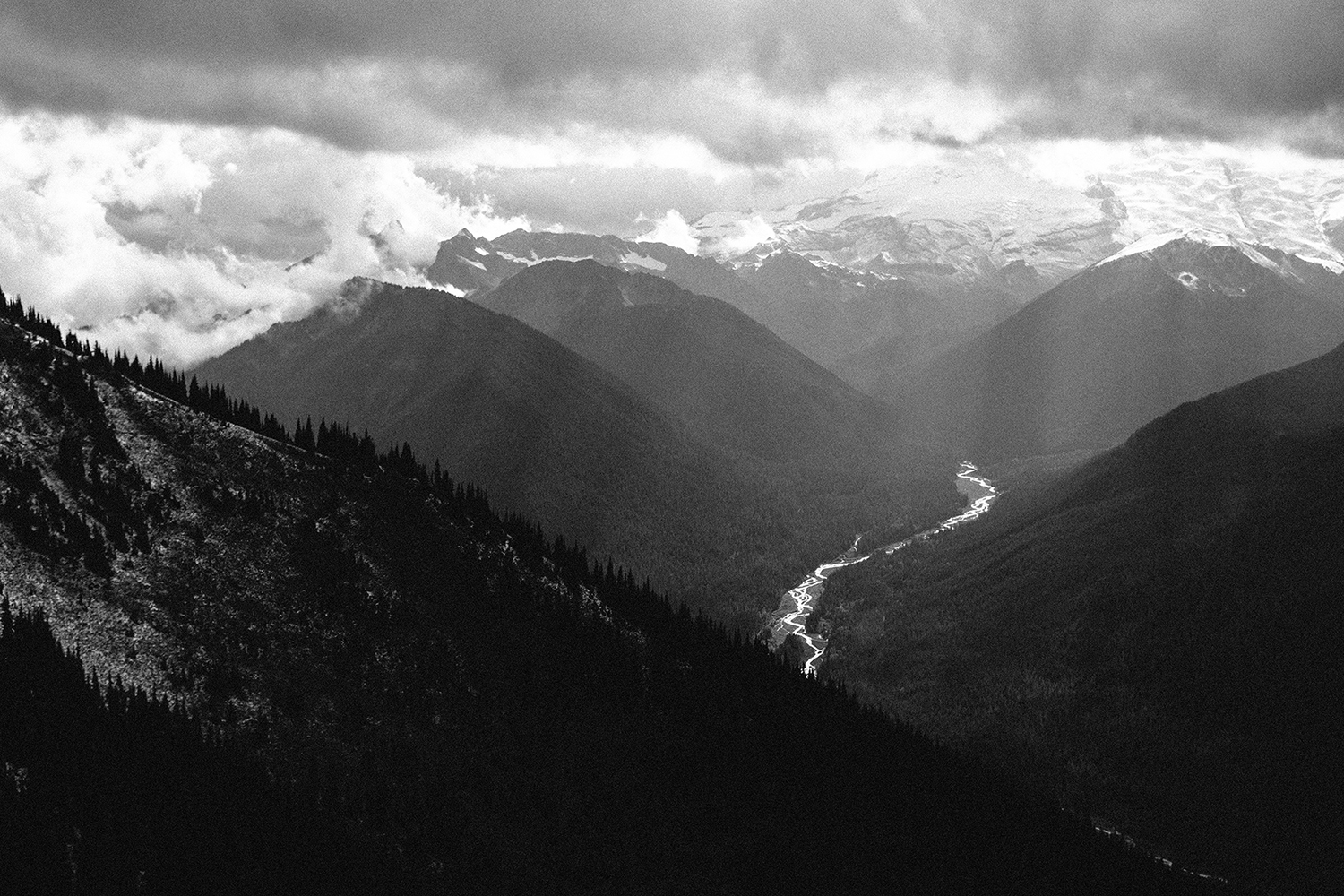

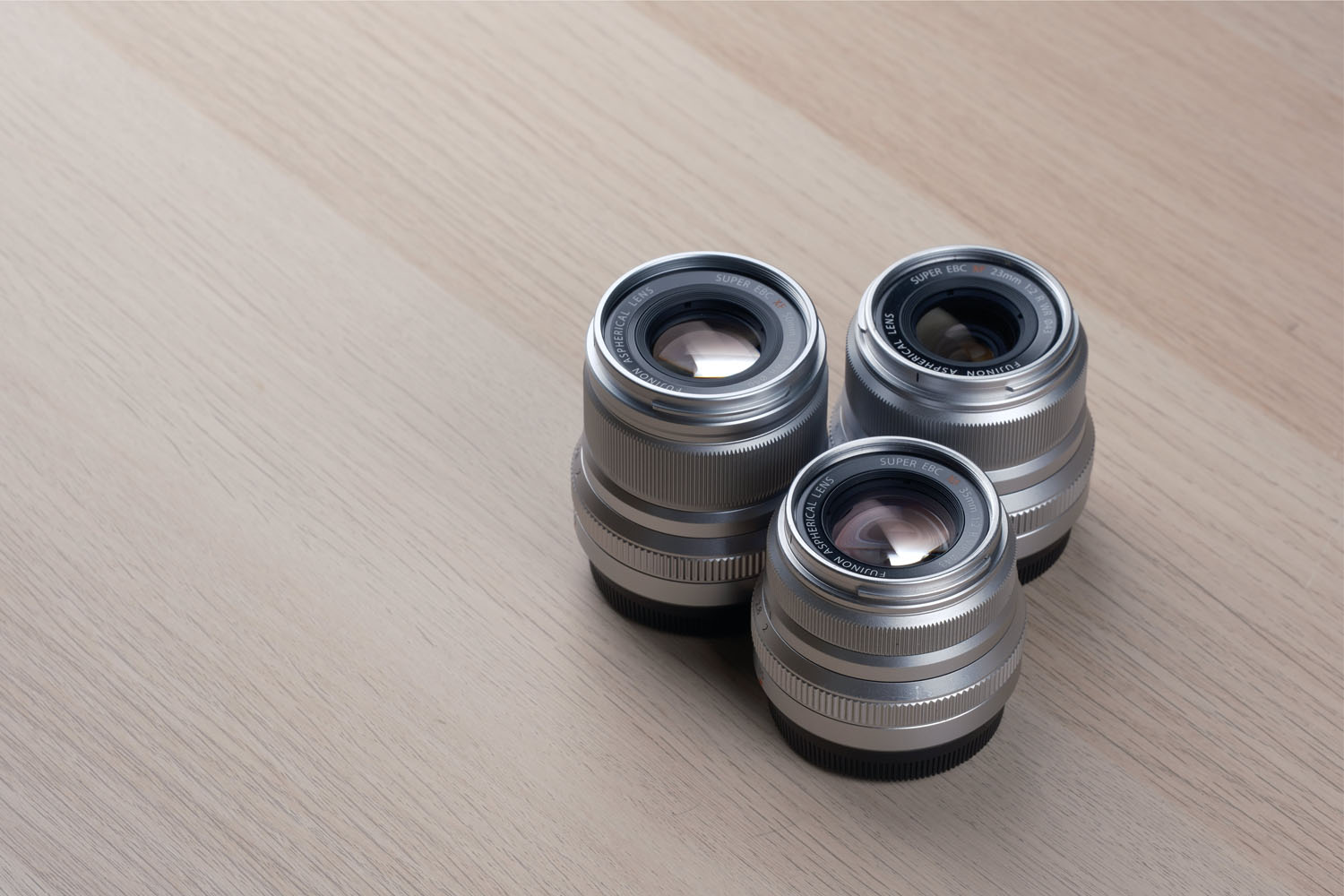
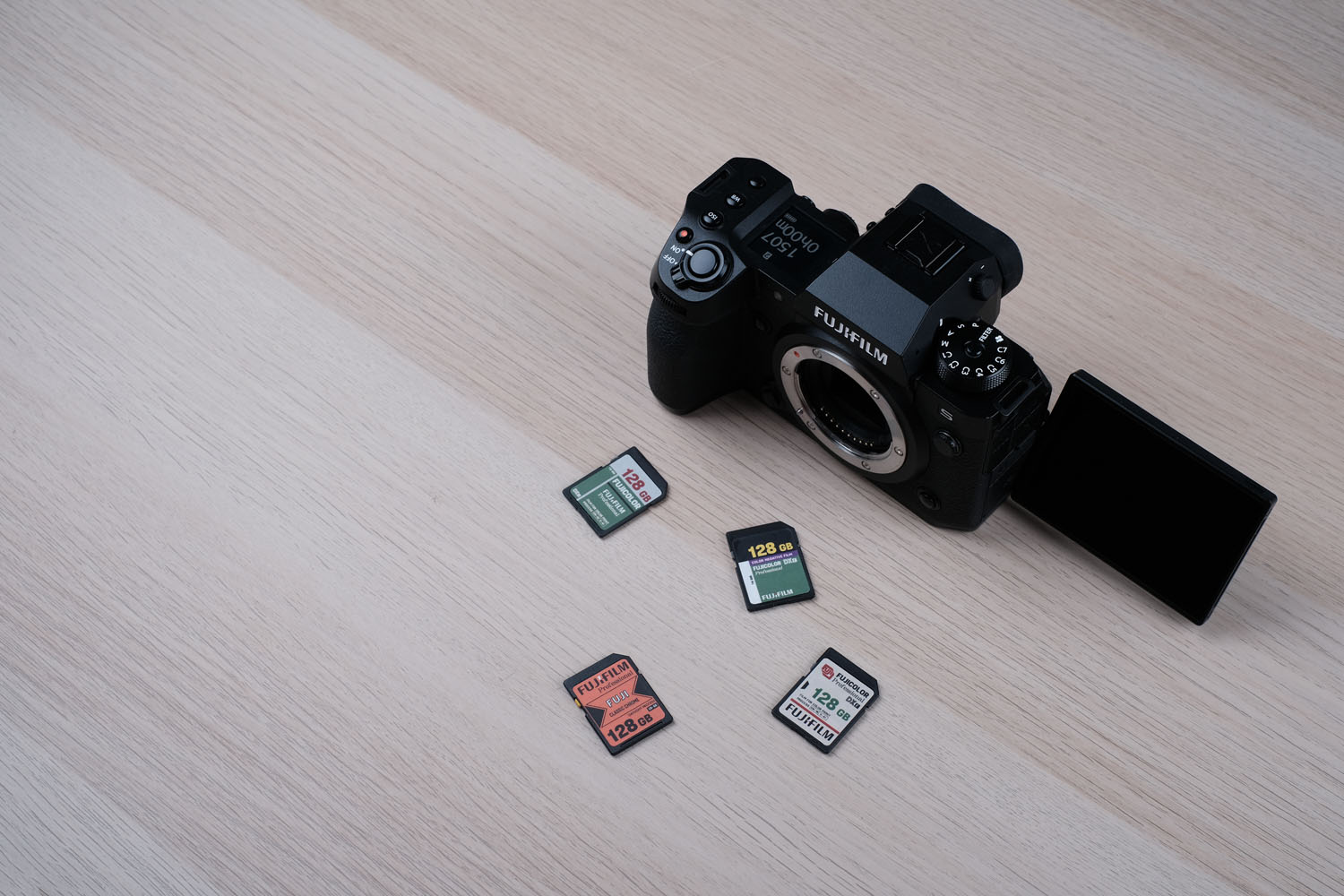
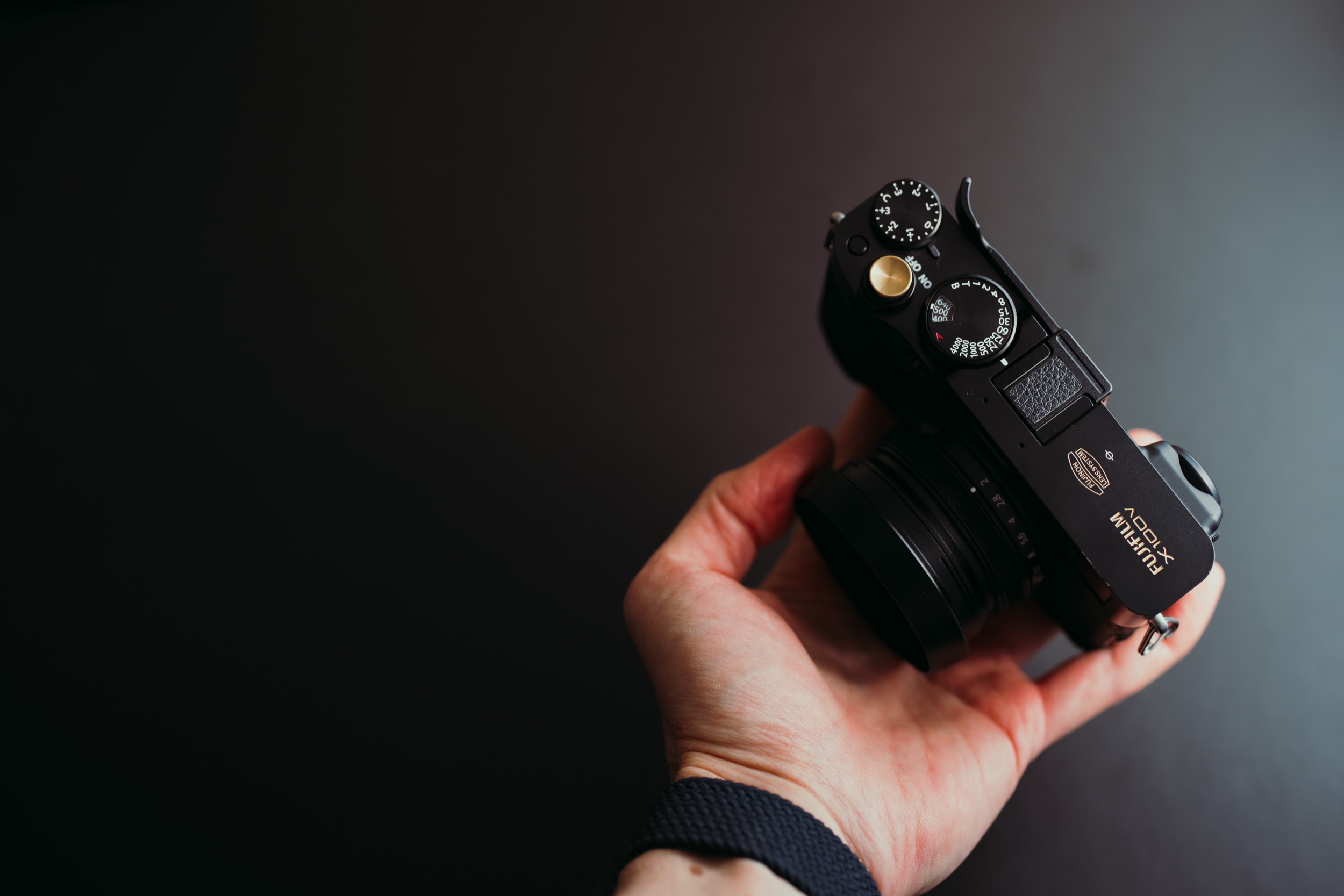
Brandon Price
April 26, 2016 @ 7:24 pm
A great article, and the photos are beautiful!
Bradley Hanson
April 27, 2016 @ 12:16 am
Thank you, Brandon!
Amer Kapetanović
April 26, 2016 @ 11:52 pm
Nice article and I do agree with most of it. Thank you for writing and sharing. However, I’d like to add one more perspective here: My X-T1 failed in January. Got it back from repair by March 13. 350 USD for repairing lcd display flat cable (mainboard as well) and 6 weeks turnaround. When I got it back, the same day my 90mm f2.0 failed. Aperture was stuck somewhere at 5.6 and not moving at all. Last week X-T1 just died in the middle of the shoot (it seems like the shutter died, it is stuck while covering the sensor). 90mm has not yet arrived and I am sending X-T1 to the service again. Please do not get me wrong here – I absolutely LOVE working with X-T1, especially X-lenses (I own 23 1.4, 27 2.8, 56 1.2 & 90 f2.0) but, honestly, it proved to be unreliable and the service turnaround time is just ridiculous. For a professional photographer camera and lenses reliability and having short service turnaround time as short as possible is imperative.
I also shot weddings using X-T1 & X100 combo but my recent X-T1 failures make me reluctant to do so ever again. I like Fuji images far more than Nikon/Canon but there is much more to pro photography than that.
Bradley Hanson
April 27, 2016 @ 12:17 am
Sorry to hear. I have had a very different experience with my X-Pro1 bodies. I do agree that Fujifilm needs an FPS service like Nikon and Canon, but I think that is in the works.
Leaving Nikon for Fujifilm | Bradley Hanson
April 27, 2016 @ 11:00 am
[…] Sourced through Scoop.it from: https://www.fujixpassion.com […]
Leaving Nikon for Fujifilm | Fujifilm X Cameras...
April 27, 2016 @ 4:30 pm
[…] A BRIEF PREFACE: I’ve been photographing weddings all over the world since 1999. Prior to that, I was shooting for the Seattle weekly papers and doing portraits. In high school, I was the yearbook … […]
Leaving Nikon for Fujifilm | Fujifilm X Series ...
April 27, 2016 @ 8:06 pm
[…] A BRIEF PREFACE: I’ve been photographing weddings all over the world since 1999. Prior to that, I was shooting for the Seattle weekly papers and doing portraits. In high school, I was the yearbook … […]
Leaving Nikon for Fujifilm | Fuji X files | Sc...
April 28, 2016 @ 6:38 am
[…] I’ve been photographing weddings all over the world since 1999. Prior to that, I was shooting for the Seattle weekly papers and doing portraits. In high school, I was the yearbook photographer and developed my own film for my high school newspaper and wrote record reviews. It was only interesting to me, so I’ll skip the details. This is an article about equipment, but I take the same photographs, regardless of the camera. Hasselblad, Leica, iPhone, Holga. I will think about composition differently in it’s a square format or a panoramic format, but I’m always me. The photographer makes the photograph. Photographers should let go of fetishizing the tools used and redirect that energy into the final image. When digital started taking over around 2003, I used to be obsessed with shooting film and considered digital to be an affront to that. What I realized in time is that shooting film gave me a solid foundation in understanding exposure, printing and composition, as well as shooting efficiently. These are things that I take with me in my current life shooting digitally, but the medium from which the final image is created is WAY down on the list of importance. Focusing on equipment is yet another form of materialism and another form of collector mentality. I wish I could get back all the time in my life I wasted looking at pointless photos of wine bottles comparing bokeh and sharpness, reading reviews. Reading specification data is never going to be fulfilling. One will never have the perfect camera because no such camera exists. The perfect camera is in your mind. Master your craft and you’ll realize that there are really only two kinds of cameras: those make it easier to get to your desired image, and those that make it harder. In 20 years, all that will remain is the final image, especially if that image has been printed rather than sitting on hard drive in some proprietary format that no software can open anymore. Print your work! That said, here is part of the story on how I left Nikon for Fujifilm 3 1/2 years ago. (A much longer version is buried deep in my blog if you are curious). […]
Leaving Nikon for Fujifilm | My Wedding photogr...
April 28, 2016 @ 2:06 pm
[…] A BRIEF PREFACE: I’ve been photographing weddings all over the world since 1999. Prior to that, I was shooting for the Seattle weekly papers and doing portraits. In high school, I was the yearbook … […]
Leaving Nikon for Fujifilm | Fuji-X Photography...
April 29, 2016 @ 3:18 am
[…] A BRIEF PREFACE: I’ve been photographing weddings all over the world since 1999. Prior to that, I was shooting for the Seattle weekly papers and doing portraits. In high school, I was the yearbook … […]
Mark
August 31, 2016 @ 6:42 pm
It’s hard to tell what blog posts are paid for Fuji and which are genuinely the result of user experience. So to confirm, are you receiving anything from Fuji? You mention that you have been shooting Fuji since 2012 and it’s now 2016 so I wonder why you are posting this now….four years later?
I have been using Nikon since the late 90s. I have had several Nikon DSLR bodies as well as an Olympus 4:3 camera and a variety of point and shoots from Sony to Canon. I bought into the Fuji Koolaid last year after reading “blogs” around the internet that convinced me I should try out an X100T. It sounded perfect! A small bodied camera with a fixed lens. Perfect. It was the biggest mistake I ever made and I sold the camera on Craigslist last week. I picked up my old D90 (it was the last Nikon I had after selling all my gear like a lot of people) and I was blown away that it actually has more pleasing images than the X100T. No, it does not have the same High ISO performance however it also has controls in the right places, a menu that isn’t fidgety, a battery that lasts days (not hours like the X100T) and it also has a very good factory RAW program (unlike Fuji with their idiotic Silkypix derived “RAW EX Converter).
I’m not trying to rant, but I just find Fujis approach at promotion disingenuous.
zsa63
August 20, 2024 @ 8:52 am
Awesome pictures!